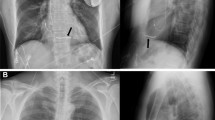Abstract
Transvenous defibrillation electrodes are constructed by wrapping conductive elements around an insulating base. However, these conductive elements do not cover the entire area of the base. The effects of varying the surface area coverage on the defibrillation impedance (DZ) are unknown. To understand the effects, four transvenous right ventricular test leads were specially fabricated. A ring design was used with 3 mm diameter cylinders equally spaced along a 5 cm length, ending 11 mm from the pacing tip. Three leads consisted of 4, 8 and 15 rings each of length ≈2.4 mm so that the coverages were 20%, 40%, and 70%, respectively. The fourth lead used 8 rings of length ≈1.2 mm each and had a coverage of 20%. DZ for each lead was obtained using three methods: (i) computer simulation; (ii)in vitro measurement in a tank; and (iii)in vivo measurement in nine dogs during defibrillation testing. The DZs from either of the first two methods correlated very well (r=0.98) with the mean DZs from the third method, indicating thatin vivo DZs can be predicted from computer andin vitro models. The study shows that: (i) at the same ring length, DZ decreases as coverage (number of rings) increases; (ii) at the same coverage, DZ decreases as ring length decreases; and (iii)in vivo, a statistically significant difference was observed in DZ between the leads with 20% coverage and the leads with higher coverages. No statistically significant difference was observed between leads with coverages >40%.
Similar content being viewed by others
References
Accorti, P. R., Jr. Leads technology. In: Implantable cardioveter-defibrillator, chap. 8, edited by I. Singer and N. Y. Armonk. Armonk, NY: Futura Publishing Company, 1994, pp. 179–206.
Duck, F. A. Physical Properties of Tissue, Chapter 6. In: Electrical properties of tissue. London: Academic Press, 1990, pp. 167–223.
Gileadi, E. Electrodes Kinetics for Chemists, Chemical Engineers, and Material Scientists. New York: VCH Publishers, 1993, pp. 1–597.
Gill, R. M., R. J. Sweeny, and P. R. Reid. The defibrillation threshold: a comparison of anesthetics and measurement methods. PACE 16:708–714, 1993.
Grabowski, A. J., and J. Newman. Current and potential distributions on a cylinder electrode.J. Electrochem. Soc. 140: 1625–1631, 1993.
Kim, Y., J. B. Fahy, and B. J. Tupper. Optimal electrode designs for electrosurgery, defibrillation, and external cardiac pacing.IEEE Trans. Biomed. Eng. 33:845–853, 1986.
Lang, D. J., J. E. Heil, S. J. Hahn, C. C. Lindstrom, and D. L. Derfus. Implantable cardioverter defibrillator lead technology: improved performance and lower defibrillation thresholds.PACE 18:548–559, 1995.
Leonelli, F. M., H. Wright, S. T. Latterell, R. S. Nelson, T. P. Adams, and M. W. Kroll. A long thin electrode is equivalent to a short thick electrode for defibrillation in right ventricle.PACE 18:221–224, 1995.
McDaniel, W. C., and J. C. Schuder. An up-down algorithm for estimation of the cardiac ventricular defibrillation threshold.Med. Instrumen. 22:286–292, 1988.
Newman, J. The fundamental principles of current distribution and mass transport in electrochemical cells. In Electro-analytical chemistry, vol. 6, edited by A. J. Bard, ed., New York: Marcel Dekker, 1973, pp. 189–342.
Pendekanti, R. Spatiotemporal Analysis of Transvenous Stimulation and Defibrillation Electrodes: Model Development and Evaluation. Durham NC: Duke University, Ph.D. Thesis, 1996.
Pendekanti, R., and C. Henriquez. Spatial potential and current distributions along transvenous defibrillation electrodes: variation of electrode characteristics.Ann. Biomed. Eng. 24: 156–167, 1996.
Pendekanti, R., C. Henriquez, P. Wolf, and D. Hoffmann. Effect of point of connection on the surface current profile over transvenous defibrillation electrodes. In: Proceedings of the 17th Annual International Conference of the IEEE-EMBS, Montreal, Canada, 1995, pp. 311–312.
Singer, I., J. Goldsmith, and C. Maldonado. Electrode surface-area is an important variable for defibrillation.PACE 18:233–236, 1995.
Tang, A.S.L., P. D. Wolf, Y. A. Afework, W. M. Smith, and R. E. Ideker. Three-dimensional potential gradient fields generated by intracardiac catheter and cutaneous patch electrodes.Circulation 85:1857–1864, 1992.
Yabe, S., W. M. Smith, J. P. Daubert, P. D. Wolf, D. L. Rollins, and R. E. Ideker. Conduction disturbances caused by high current density electric fields.Circ. Res. 66:1190–1203, 1990.
Zhou, X., J. P. Daubert, P. D. Wolf, W. M. Smith, and R. E. Ideker. Epicardial mapping of ventricular fibrillation with monophasic and biphasic shocks in dogs.Circ. Res. 72:145–160, 1993.
Ziemer, R. E., W. H. Tranter, and D. R. Fannin. Signals and Systems: Continuous and Discrete (second edition). New York: Macmillan, 1989.
Author information
Authors and Affiliations
Rights and permissions
About this article
Cite this article
Pendekanti, R., Henriquez, C., Tomassoni, G. et al. Surface coverage effects on defibrillation impedance for transvenous electrodes. Ann Biomed Eng 25, 739–746 (1997). https://doi.org/10.1007/BF02684851
Received:
Revised:
Accepted:
Issue Date:
DOI: https://doi.org/10.1007/BF02684851




